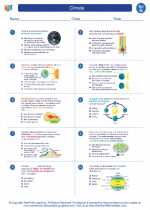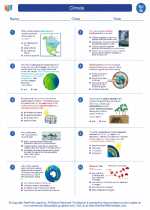Hail
Hail is a form of precipitation that consists of solid ice balls or lumps. It is typically produced during severe thunderstorms when strong updrafts carry raindrops into extremely cold areas of the atmosphere, where they freeze and form hailstones. These hailstones can vary in size, ranging from small pellets to large, golf ball-sized chunks.
Formation of Hail
1. Updrafts: During a thunderstorm, strong updrafts lift water droplets from the ground into the atmosphere.
2. Freezing: As the water droplets are carried higher into the atmosphere, they encounter extremely low temperatures and freeze into ice particles.
3. Accretion: The frozen particles continue to grow as they collide with supercooled water droplets, forming layers of ice around a nucleus.
4. Fall: When the hailstones become too heavy for the updrafts to support, they fall to the ground as hail.
Characteristics of Hail
1. Size: Hailstones can range in size from tiny pellets to large, destructive chunks.
2. Composition: Hailstones are composed of layers of ice, formed as they repeatedly encounter supercooled water droplets in the thunderstorm.
3. Damage: Large hailstones can cause significant damage to crops, vehicles, and buildings.
Study Guide
- What are the conditions required for hail formation?
- Describe the process of hail formation in a thunderstorm.
- How does the size of hailstones vary during a hailstorm?
- Explain the composition of hailstones.
- Discuss the potential damage caused by large hailstones.
Understanding the formation and characteristics of hail is important for understanding severe weather patterns and their potential impacts.
.









